SNVSAX4 June 2017 LM1086-MIL
PRODUCTION DATA.
- 1 Features
- 2 Applications
- 3 Description
- 4 Revision History
- 5 Pin Configuration and Functions
- 6 Specifications
- 7 Detailed Description
-
8 Application and Implementation
- 8.1 Application Information
- 8.2 Typical Applications
- 8.3
Other Applications
- 8.3.1 Adjustable at 5 V
- 8.3.2 5-V Regulator with Shutdown
- 8.3.3 Battery Charger
- 8.3.4 Adjustable Fixed Regulator
- 8.3.5 Regulator With Reference
- 8.3.6 High-Current Lamp-Driver Protection
- 8.3.7 Battery-Backup-Regulated Supply
- 8.3.8 Ripple Rejection Enhancement
- 8.3.9 Automatic Light Control
- 8.3.10 Remote Sensing
- 9 Power Supply Recommendations
- 10Layout
- 11Device and Documentation Support
- 12Mechanical, Packaging, and Orderable Information
Package Options
Mechanical Data (Package|Pins)
- Y|0
Thermal pad, mechanical data (Package|Pins)
Orderable Information
7 Detailed Description
7.1 Overview
A basic functional diagram for the LM1086-MIL-ADJ (excluding protection circuitry) is shown in Figure 13. The topology is basically that of the LM317 except for the pass transistor. Instead of a Darlingtion NPN with its two diode voltage drop, the LM1086-MIL uses a single NPN. This results in a lower dropout voltage. The structure of the pass transistor is also known as a quasi LDO. The advantage of a quasi LDO over a PNP LDO is its inherently lower quiescent current. The LM1086-MIL is specified to provide a minimum dropout voltage of 1.5 V over temperature, at full load.
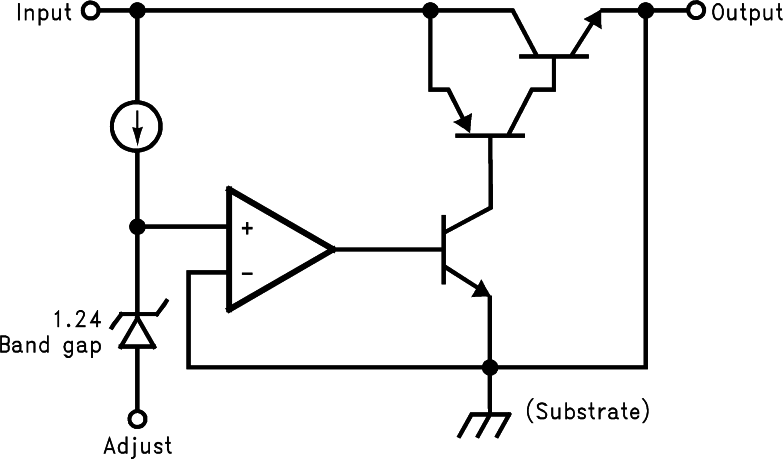 Figure 13. Basic Functional Block Diagram
Figure 13. Basic Functional Block Diagram
7.2 Functional Block Diagram
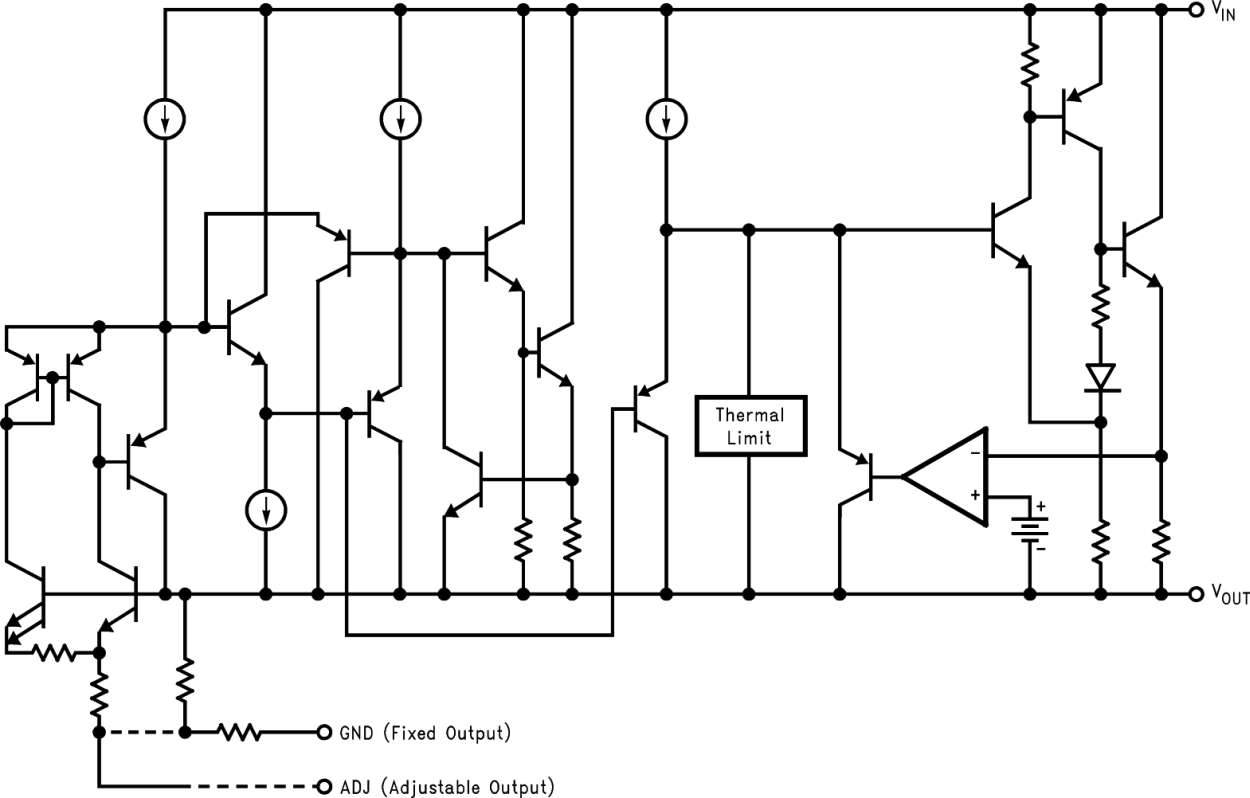
7.3 Feature Description
7.3.1 Ripple Rejection
Ripple rejection is a function of the open loop gain within the feedback loop (refer to Figure 13 and Figure 16). The LM1086-MIL exhibits 75 dB of ripple rejection (typical). When adjusted for voltages higher than VREF, the ripple rejection decreases as function of adjustment gain: (1 + R1 / R2) or VO / VREF. Therefore, a 5-V adjustment decreases ripple rejection by a factor of four (−12 dB); output ripple increases as adjustment voltage increases.
However, the adjustable version allows this degradation of ripple rejection to be compensated. The adjust terminal can be bypassed to ground with a capacitor (CADJ). The impedance of the CADJ must be equal to or less than R1 at the desired ripple frequency. This bypass capacitor prevents ripple from being amplified as the output voltage is increased.
7.3.2 Load Regulation
The LM1086-MIL regulates the voltage that appears between its output and ground pins, or between its output and adjust pins. In some cases, line resistances can introduce errors to the voltage across the load. To obtain the best load regulation, a few precautions are needed.
Figure 14 shows a typical application using a fixed output regulator. Rt1 and Rt2 are the line resistances. VLOAD is less than the VOUT by the sum of the voltage drops along the line resistances. In this case, the load regulation seen at the RLOAD would be degraded from the data sheet specification. To improve this, the load should be tied directly to the output terminal on the positive side and directly tied to the ground terminal on the negative side.
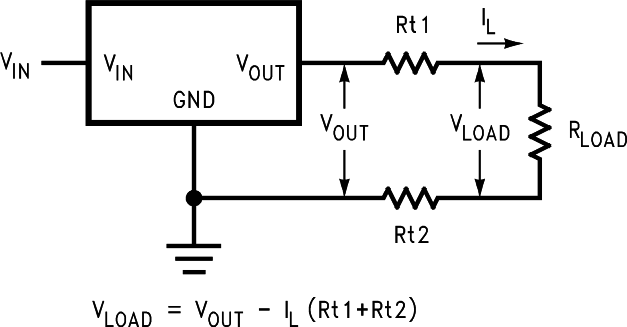 Figure 14. Typical Application Using Fixed Output Regulator
Figure 14. Typical Application Using Fixed Output Regulator
When the adjustable regulator is used (Figure 15), the best performance is obtained with the positive side of the resistor R1 tied directly to the output terminal of the regulator rather than near the load. This eliminates line drops from appearing effectively in series with the reference and degrading regulation. For example, a 5-V regulator with 0.05-Ω resistance between the regulator and load has a load regulation due to line resistance of 0.05 Ω × IL. If R1 (= 125 Ω) is connected near the load the effective line resistance will be 0.05 Ω (1 + R2 / R1) or in this case, it is 4 times worse. In addition, the ground side of the resistor R2 can be returned near the ground of the load to provide remote ground sensing and improve load regulation.
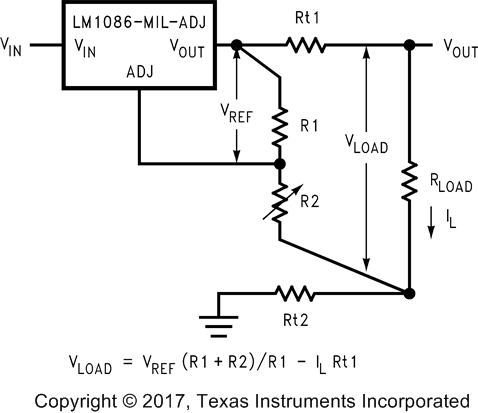 Figure 15. Best Load Regulation Using Adjustable Output Regulator
Figure 15. Best Load Regulation Using Adjustable Output Regulator
7.3.3 Overload Recovery
Overload recovery refers to the ability of the regulator to recover from a short-circuited output. A key factor in the recovery process is the current limiting used to protect the output from drawing too much power. The current-limiting circuit reduces the output current as the input-to-output differential increases. Refer to short-circuit curve in Typical Characteristics.
During normal start-up, the input-to-output differential is small because the output follows the input. But, if the output is shorted, then the recovery involves a large input to output differential. Sometimes during this condition the current limiting circuit is slow in recovering. If the limited current is too low to develop a voltage at the output, the voltage will stabilize at a lower level. Under these conditions it may be necessary to recycle the power of the regulator in order to get the smaller differential voltage and thus adequate start up conditions. Refer to Typical Characteristics for the short circuit current vs input differential voltage.
7.4 Device Functional Modes
7.4.1 Output Voltage
The LM1086-MIL adjustable version develops a 1.25-V reference voltage, (VREF), between the output and the ADJ pin. As shown in Figure 16, this voltage is applied across resistor R1 to generate a constant current I1. This constant current then flows through R2. The resulting voltage drop across R2 adds to the reference voltage to sets the desired output voltage.
The current IADJ from the adjustment terminal introduces an output error . But since it is small (120 µA maximum), it becomes negligible when R1 is in the 100-Ω range.
For fixed voltage devices, R1 and R2 are integrated inside the devices.
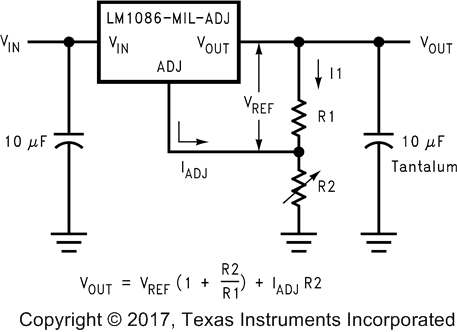 Figure 16. Basic Adjustable Regulator
Figure 16. Basic Adjustable Regulator
7.4.2 Stability Consideration
Stability consideration primarily concerns the phase response of the feedback loop. In order for stable operation, the loop must maintain negative feedback. The LM1086-MIL requires a certain amount series resistance with capacitive loads. This series resistance introduces a zero within the loop to increase phase margin and thus increase stability. The equivalent series resistance (ESR) of solid tantalum or aluminum electrolytic capacitors is used to provide the appropriate zero (approximately 500 kHz).
Aluminum electrolytics are less expensive than tantalum capacitors, but their ESR varies exponentially at cold temperatures requiring close examination when choosing the desired transient response over temperature. Tantalums are a convenient choice because their ESR varies less than 2:1 over temperature.
The recommended load/decoupling capacitance is a 10-µF tantalum or a 50-µF aluminum. These values assure stability for the majority of applications.
The adjustable versions allows an additional capacitor to be used at the ADJ pin to increase ripple rejection. If this is done increate the output capacitor to 22 µF for tantalum or to 150 µF for aluminum.
Capacitors other than tantalum or aluminum can be used at the adjust pin and the input pin. A 10-µF capacitor is a reasonable value at the input. See Ripple Rejection regarding the value for the ADJ pin capacitor.
Large output capacitance is desirable for applications that entail large changes in load current (microprocessors, for example). The higher the capacitance, the larger the available charge per demand. It is also desirable to provide low ESR to reduce the change in output voltage:
It is common practice to use several tantalum and ceramic capacitors in parallel to reduce this change in the output voltage by reducing the overall ESR.
Output capacitance can be increased indefinitely to improve transient response and stability.
7.4.3 Protection Diodes
Under normal operation, the LM1086-MIL regulator does not need any protection diode. With the adjustable device, the internal resistance between the adjustment and output terminals limits the current. No diode is needed to divert the current around the regulator even with a capacitor on the ADJ pin. The ADJ pin can take a transient signal of ±25 V with respect to the output voltage without damaging the device.
When an output capacitor is connected to a regulator and the input is shorted, the output capacitor discharges into the output of the regulator. The discharge current depends on the value of the capacitor, the output voltage of the regulator, and rate of decrease of VIN. In the LM1086-MIL regulator, the internal diode between the output and input pins can withstand microsecond surge currents of 10 A to 20 A. With an extremely large output capacitor (≥ 1000 µf), and with input instantaneously shorted to ground, the regulator could be damaged. In this case, an external diode is recommended between the output and input pins to protect the regulator, shown in Figure 17.
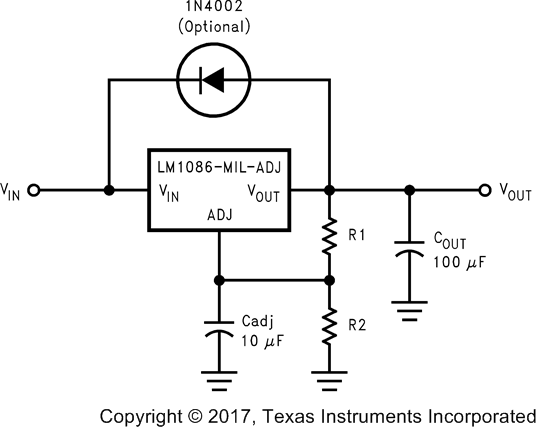 Figure 17. Regulator with Protection Diode
Figure 17. Regulator with Protection Diode